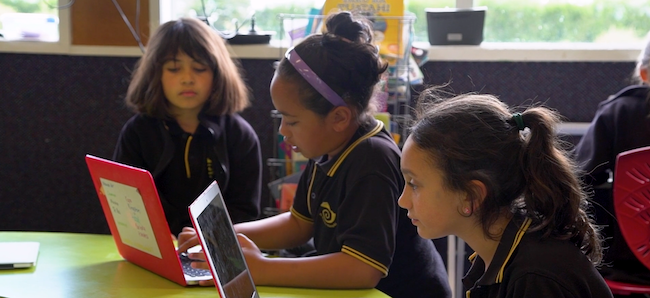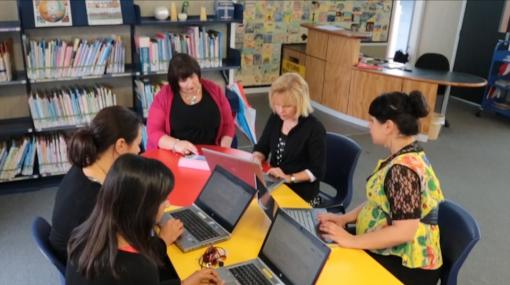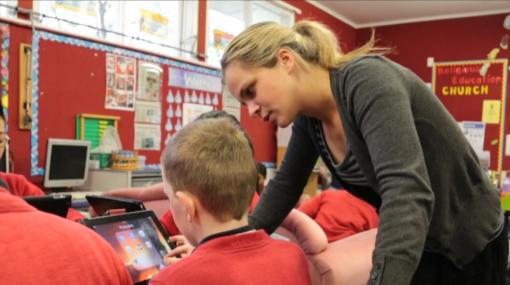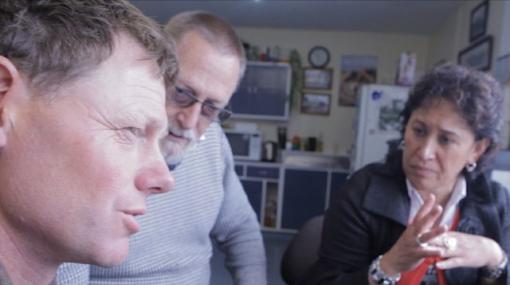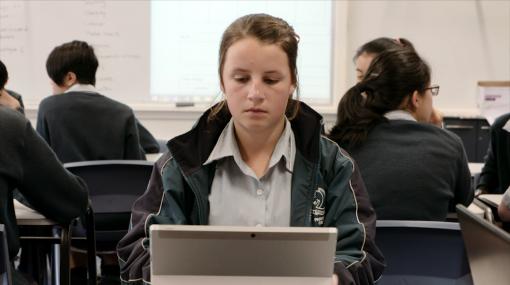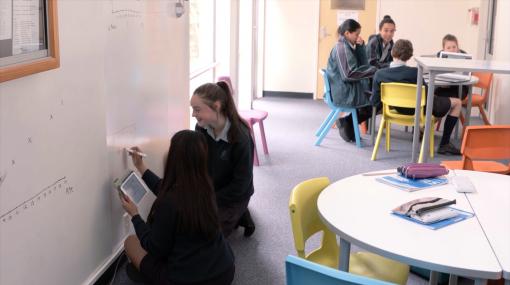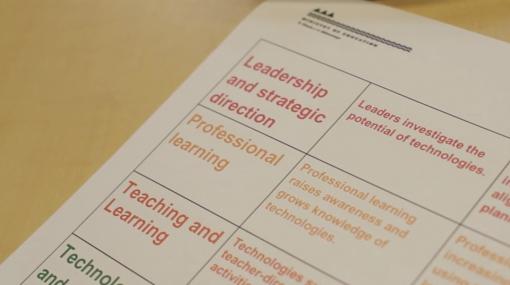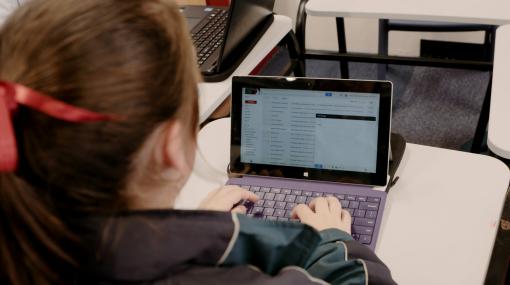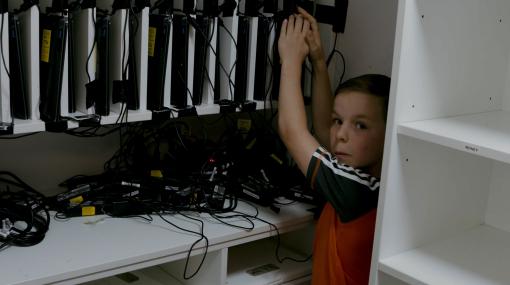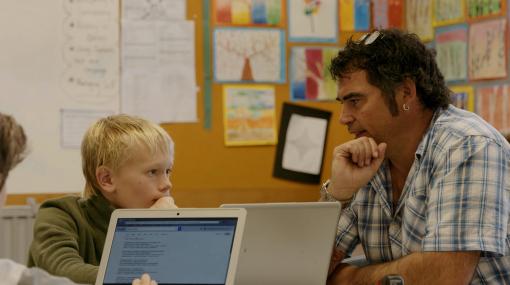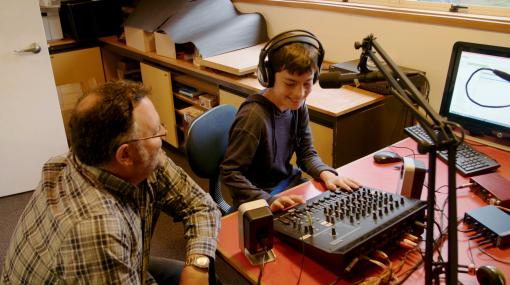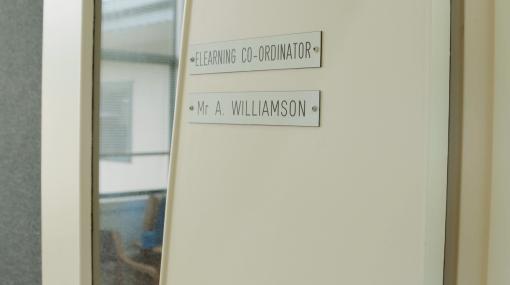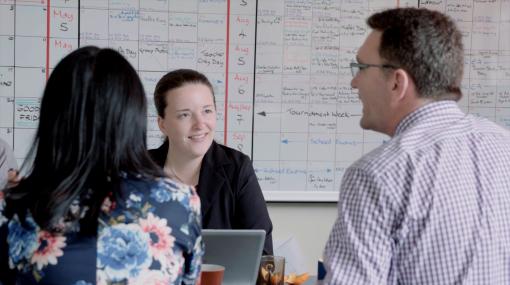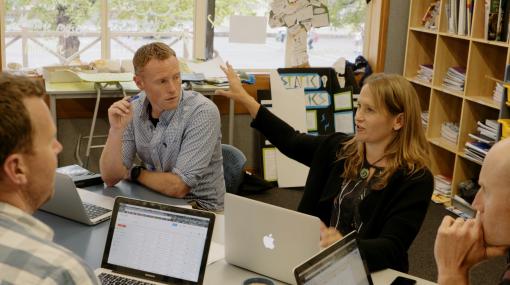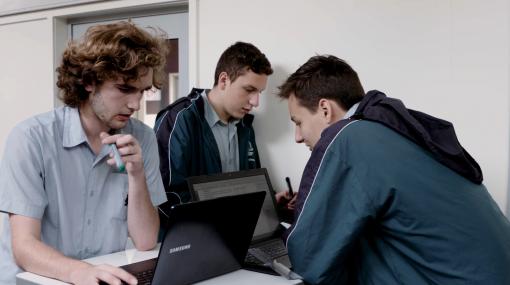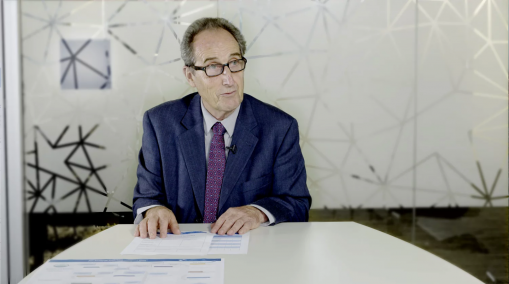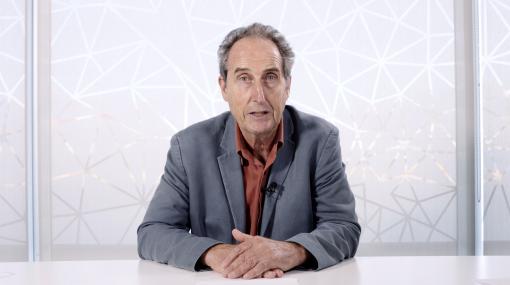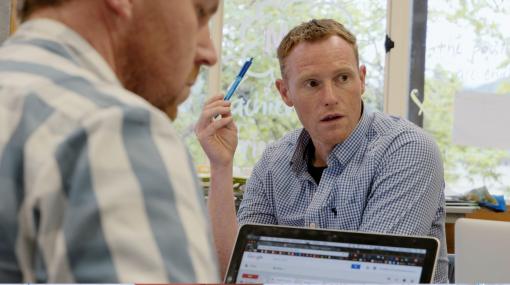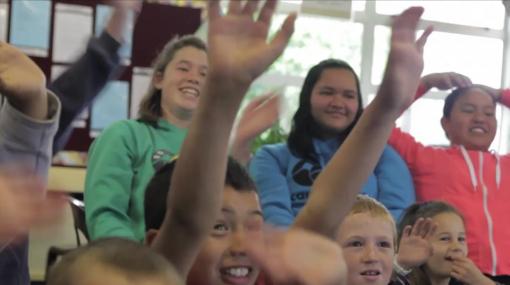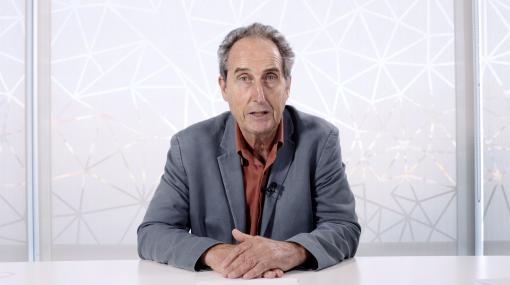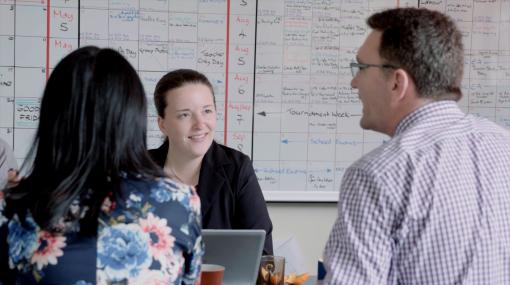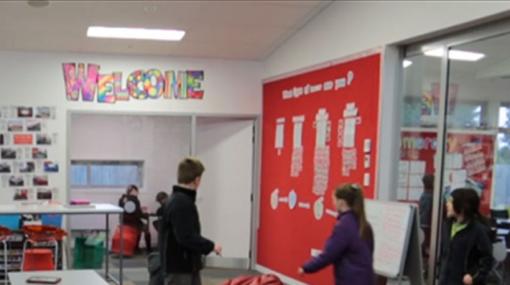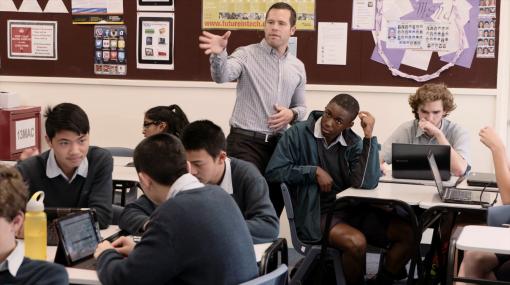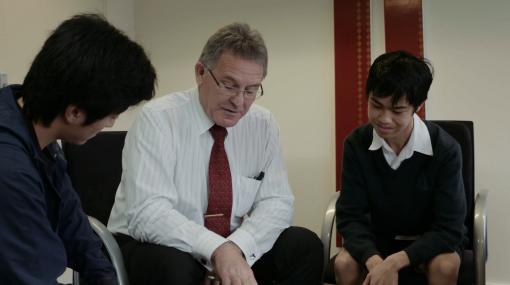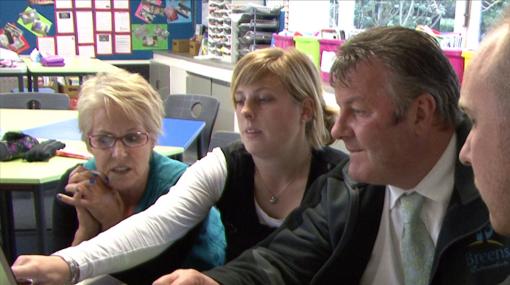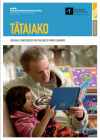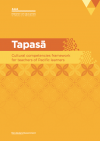Reviewing your school curriculum
Use the content in this section, in conjunction with the e-Learning Planning Framework and Strategic thinking roadmap to support your development of e-learning and digital fluency within your local curriculum.
Developing your local curriculum
Plan for your staff, students and the wider community to develop and own a negotiated local curriculum in which technologies are integrated with clear alignment to your vision and strategy.
“Deliberate leadership aligns digital literacy and the use of digital technologies with curriculum needs.”
Local curriculum design
As you watch this clip, consider how developing your students’ digital fluency can be woven through your local curriculum.
Effective local curriculum design
Effective local curriculum design is framed around progression based on the purposes for learning. Developing capability in local curriculum design brings The New Zealand Curriculum framework to life in our schools and kura and supports the classroom curriculum to be responsive to the needs of ākonga and students.
Local curriculum design weaves the national curriculum framework into your community's context, to provide rich learning opportunities for ākonga.
Strong local curriculum design responds to ākonga and whānau needs and aspirations and facilitates learning connections and strengthens partnerships with whānau, hapū, Iwi and community. It includes opportunities for ākonga to learn in and with their community and to contribute to it in ways that build on, and strengthen both community and ākonga capabilities.
– Ministry of Education
Staff at St Hilda's talk about the difference using technology has made to teaching and learning. The change in their approach to teaching allows more time for teacher–student interaction. Students can make choices about what tools they use for learning.
Using e-learning tools and practices to support your local curriculum
The New Zealand Curriculum describes the learning all young people should experience no matter what school or kura they go to and the progress and expectations associated with this learning. It provides the framework for schools and kura to use in their local curriculum design.
Curriculum design and review involves making decisions about how to give effect to the national curriculum in ways that best address the particular needs, interests, and circumstances of the school’s students and community.
Practical steps
Principals and school leaders
- Gather evidence of what is happening, in terms of student achievement, to inform curriculum design and decision-making.
- Investigate frameworks and resources to support your review.
- Assign roles and responsibilities to personnel to lead/facilitate the approach to school-wide use of technologies/e-learning in curriculum design and review.
- Provide opportunities for staff and the wider community (students, parents) to co-construct and review your school curriculum through an e-learning lens.
- Ensure your school’s curriculum reflects the essential nature of each learning area.
- Consider how you can use technologies to support the diverse needs of learners, particularly your Māori and Pasifika students.
Teachers
Plan and put into practice authentic learning experiences that will make the best use of technologies to support student-driven inquiry practices by:
- using a range of digital technologies to create, explore, consolidate, and extend knowledge
- using a variety of digital technologies to share new learning with others
- using appropriate communication and collaboration tools to connect with others about learning
- using digital technologies to inform and support assessment, reflection, and metacognition to help inform future steps in learning
Discussion starters
Principals and school leaders
- How will your vision for e-learning be integrated with your local curriculum plan?
- How will the effective use of technologies support the way your school fosters the values and principles in The New Zealand Curriculum?
- How will the effective use of technologies support the key competencies?
- How will teachers, kaiako, ākonga and students build their digital fluency to confidently and effectively use digital technologies to enhance teaching and learning outcomes?
- How will you foster connections with your local community and iwi to enable them to be involved in and support your vision for e-learning?
- What opportunities are there for your school to collaborate and network with other schools so that you can offer enhanced teaching and learning experiences?
Teachers
- How do you plan your classroom curriculum for your students’ strengths and needs?
- How are technologies used to support all students, including those with specific learning needs?
- How do you use technologies/e-learning to enable students to build knowledge, connect, collaborate, and co-construct and share their learning within and beyond school?
- How do you ensure that Māori learners have access to high-quality culturally relevant digital technologies, resources, and learning opportunities?
- How will you make connections or develop a teacher inquiry to find out what is possible for e-learning in your local curriculum (to overcome “I don’t know what I don’t know”)?
More information »
- Local curriculum: Designing rich opportunities and coherent pathways for all learners
- Strategic thinking roadmap
- e-Learning Planning Framework
You might like...
Snapshot of learning: Year 9 & 10 Integrated programme at Orewa College – In 2018, Orewa College launched a curriculum review to consider new approaches to better align the national curriculum with its own contemporary thinking about effective learning, and how to prepare students for the world they live in today. This snapshot outlines why the school took this route and how the approach was developed.
Filter by: Strategic planning Primary Secondary
Sorry, no items found.
Resources
Key resources
Strengthening your local curriculum
This section of the NZC Online website supports the process of curriculum design and review. It includes local curriculum guides, information, tools, and inspirational stories to help schools make decisions about curriculum.
Local curriculum design tool | Rapua te ara tika
This online Toolkit will help you design a quality local curriculum for your ākonga. It is for all Kāhui Ako, schools and kura in New Zealand.
Tātaiako: Cultural competencies for teachers of Māori learners
Tātaiako provides a framework that can support professional development and learning for teachers, leaders, and aspiring principals. The framework identifies five competencies and for each provides indicators at four levels: entry to initial teacher education, graduating teachers, certified teachers, and leaders. Supporting the indicators are possible outcomes expressed as examples of learner voice and of whānau voice.
Tapasā – Cultural competencies framework for teachers of Pacific learners
A tool that can be used to increase the capability of all teachers of Pacific learners.
-
- Tapasā resources : video resources with conversation starters and supplementary resources.
- Quality Practice Template – Cross Sector Examples for a QPT using a Tapasā lens : a description of quality practices and evidence teachers can gather to demonstrate competence in each Teacher Standard.
Ka Hikitia – Ka Hāpaitia
Based on the guiding principles of excellent outcomes, belonging, strengths-based, productive partnerships, and Te Tiriti o Waitangi, Ka Hikitia – Ka Hāpaitia sets out the cross-agency strategy for achieving system shifts in education to support Māori learners and their whānau, hapū and iwi to achieve excellent and equitable outcomes.
Learning progressions framework
The Learning Progressions Frameworks in reading, writing and mathematics show the significant steps that learners take as they develop in reading, writing and mathematics from Years 1–10.
Progress and consistency tool
PaCT is a tool designed to help teachers make dependable judgments about students' achievement that can be used to track progress in reading, writing, and mathematics.
Te Waharoa ararau
Te Waharoa Ararau (TWA) is an online system that kura in Communities of Learning can use to collect and report individual student achievement information in relation to Ngā Whanaketanga Rumaki Māori. It is available to all schools with Year 1-8 students.
Positive behaviour for learning
Positive Behaviour for Learning School-Wide (PB4L-SW) is an evidence-based framework that provides schools with a process for teaching social and behavioural skills to support learning, engagement and retention at school.
